
J.L.S
Members-
Posts
25 -
Joined
-
Last visited
Content Type
Profiles
Forums
Articles
Gallery
Downloads
Events
Everything posted by J.L.S
-
Japanese tool used to grind tools on stones
J.L.S replied to J.L.S's topic in Tools, general discussion
I was explaining "myself" so you could see that I really never meant to insult or offend anyone here. you just cleanly wrote a whole page explaining politely how I "deserve to be insulted" while actively complimenting, insulting me and making assumptions about me as a person you can't possibly fairly make. I don't even know how to respond to that, Im not even mad about this. I just feel sad. one last time, im sorry if I offended anyone in the way I was speaking. it was never my intention. -
Japanese tool used to grind tools on stones
J.L.S replied to J.L.S's topic in Tools, general discussion
frosty I think you might have misunderstood me could we please discuss this over pm's and not clutter up the thread further with any of our arguments? this is getting a bit heated and...personal. I accidentally wrote in the quote and don't know how to delete the box -
What did you do in the shop today?
J.L.S replied to Mark Ling's topic in Blacksmithing, General Discussion
the consensuses about "taking things out of the wilderness" in Germany has different rules all over. in my area, when I asked the police regarding, wood, stones, animal horns/bones, pine pitch. they said on private land: "no! nothing is allowed!" which is obvious. on public places: "yes but only as little as can be carried(no truck/car loads)" "yes but only dead wood and smaller sticks" "yes but only if already dead animal parts and only if not killed by hunter or ranger and weight limited to what one hand can carry" "no mining, no digging, no felling, no hunting -without permit or owner permission" Im not sure this is the actual "law" but the "only as much as you can carry" rule I've encountered a lot in regards to the issue, except on private land, which you're not supposed to enter in the first place. -
Japanese tool used to grind tools on stones
J.L.S replied to J.L.S's topic in Tools, general discussion
"act like an adult" I don't appreciate the manner in which you have chosen to address my shortcomings.(like that?) "childish language" well, that's like, your own opinion man..dude bro?(I don't even speak like that, but I do speak in an expressive flavorful lighthearted manner, sorry) "read the stickies" so, no "@"-ing at people? strange but ok, personally I was never a fan of that anyway, other than that. I didn't insult or intentionally disrespect people and I did say "thank you" to people. -
What did you do in the shop today?
J.L.S replied to Mark Ling's topic in Blacksmithing, General Discussion
today "in the shop" I stood 5 hours in shorts in the rain in the river banging away with a chisel at a stone for a tool im making. its not the stone i needed but I got a stone I could use. also, understandably, people who heard the banging came to marvel at the strange man, in short, in the river., in the rain. other than strange looks, this what I got, a nice convex whetstone :"D -
yea the forge entrances(/exhaust openings?) look huge! unless its perspective and the thing is actually not that big what i see on forges like that is that the opening is usually about the size of...a brick laid flat on its side. maybe a bit higher and a smidge longer. thats maybe...20cm x 10cm? ( 8" x4") ? I dont have a gas forge, am japanophile smith, fuigo and clay and bricks and thats all my forge needs.
-
Japanese tool used to grind tools on stones
J.L.S replied to J.L.S's topic in Tools, general discussion
yep I know how that feels...I dont know a lot of japanese either, and i forget to bookmark websites like that too...there was one that had a name for the process of using a wooden board to grind japanese knives on these huge electric wet grinding wheels all I know is that the word started with "E"...E...Euke...Eku...Eruka...Eureka..no thats not right... good luck on finding that website, I hope it has the name! if I cant find out the name ill have to resort to naming it something like "ura shaping board" or "hollow grinding jig/board" XD -
Japanese tool used to grind tools on stones
J.L.S replied to J.L.S's topic in Tools, general discussion
I just remembered something, sword polishers are called "togishi", maybe the word "naishi" is something in the same direction? -
Japanese tool used to grind tools on stones
J.L.S replied to J.L.S's topic in Tools, general discussion
yes the tool is used to help grind in the hollow part on japanese plane irons but "dai naishi-gana" google translates to "i dont know" XD hm but i'll keep that name in mind during my research. thx yes the sen was used but not to hollow out the back it was used to clean/flatten the front, the board tool was used to grind in the hollowed out back, look at the whetstone hes grinding on, the stone is curved and has surface chisel marks for faster/rougher grinding. sen also work for carving in the ura but this smith is using that "mystery name"-board for that. The use of the @tag is discouraged. You might want to do a little reading.Using the @ name on the forum -
Japanese tool used to grind tools on stones
J.L.S replied to J.L.S's topic in Tools, general discussion
rockstar.esq, yeh im familiar with that stuff ^-^ im mainly studying japanese tool smithing, also the hollow/ura prevent your whetstones from deforming or wearing out faster. good whetstone > good tool tho that point was probably mostly made in the ancient times, where only natural stones were used and finding a good natural stone, was/is still today like finding a treasure. I got lucky once, found a stone that showed "potential" took it home cut it and flattened it and I wouldn't trade it for 1000$! since then Ive cut several other rocks that showed "potential" but never found anything close to as good(for woodworking tools) dug up the video, the tool is at 18:38 and after that we see a sen being used as well -
Japanese tool used to grind tools on stones
J.L.S replied to J.L.S's topic in Tools, general discussion
the censored word was a non swear word, thats why I wrote it.(thought that much would be ok) I don't see how its offensive when I voice my own hopelessness, over the fact I cant figure out what something is called, in a lighthearted joking manner. even if I had used a swear word, in no way did I mean to attack anyone. we all learn from our experiences and I guess I just learned that even non swear words that might be "too close for comfort" are not ok in this forum. Frosty: I am very young but c'mon man, no adults likes being called "kid" -
Hoi, In a while ill get back to the forge to work on some forge welded tools, for that id like to test a mix of borax with steel filings. problem is, my collection of steel filings is contaminated by oily drill chips, so questions: does that matter? best way to remove oil from steel filings/dust?
-
Japanese tool used to grind tools on stones
J.L.S replied to J.L.S's topic in Tools, general discussion
Frosty, as far as I can tell its a traditional tool that seems to be part of the old handmade only factory standard, its true that nowadays they use grinding machines to create the hollow on the backs of plane irons and chisels but back then this is the best/fastes tool they had, I don't think its a cheat tool? its essentially like a hand sanding stick that knife makers use, except the tools is on the stick. ye ye, maybe i should go to some Japanese smithing forum, true u_u kozzy, yea i know that feeling and im relatively "young", i guess that's what happens when you occupy your life with things from a by gone era XD I hope you find something, anything, im still coming up blank D: -
Japanese tool used to grind tools on stones
J.L.S replied to J.L.S's topic in Tools, general discussion
this is a rough surface grinding tool, not at all used for bevel angles and such, its to grind in the hollow section on japanese tools the "ura" the plane blades, chisels razors etc, get clamped down to the wood to exert greater pressure. the whetstones used for this are intentionally curved for hollowing out the tools back side. nobody ever seems to talk about these tools tho, I suppose its a case of "lost in simplicity" so simple and easy to understand that its a case of "why would anyone research this?" I can make this from the pictures but just want to know the xxxxxxxxxxx name! XD -
seems pretty normal to me, these things happen every now and then. In the case of my japanese forge, when the clay tuyere starts getting a little melted, I mix up some refractory of mortared up charcoal and clay and slap it on the tuyere, that usually lasts for a long time. I don't think cracked firebricks are much to worry about? ps: Bentonite kitty litter clay, made it into powder and tried it but...it was, not very good... it would crack, flake/peel itself off and float around in my forge.
-
Kiln, foundry.forge, whatever
J.L.S replied to Saint 5150's topic in Smelting, Melting, Foundry, and Casting
A ways to increase the heat... there are two ways to do that, size or velocity. for blacksmithing tho, most go for velocity, size only heats "more/larger area", velocity heats "faster" and if you want to melt steel, you probably need both. the way to achieve higher velocity is to have a pipe/tuyere that becomes narrower right as it enters the forge/kiln/whatever. here's some reference: if you have a 2" (5cm) diameter pipe, at the point where it enters the forge/kiln/whatever, it should taper down so the opening is about 1" (2.5cm) diameter. when I was learning all this, a way this was taught to me was this: "open your mouth wide and blow air on your palm, gradually narrow your mouth down and you'll feel the air hitting your hand with more force" another way to increase air velocity is to have a blower/source that's already producing air blasts at high velocities. if you have something that can blow a 2lb (1kg) block of steel off a kitchen table effortlessly, you're good to go. if not, play around with tapered tuyeres and good luck? hope that helps, im still studying a lot myself. -
that seems about right with what ive seen from my research on japanese tool smiths forge welding. tho I have seen a video of a japanese smith with considerable skill, experience and beautiful hammer technique who did it like this: 1. 1 blow in the middle 2. 1 blow on each corner then followed by regular hammering working from the middle outwards and he was incredibly fast and accurate, he knew exactly where he wanted his blows to go(least thats what it seemed like to me)
-
Truth be told, it is in fact just a hidden piece of cut and weld modified railroad track but thank you! I've been thinking of making a bick but the only way to get the necessary size of material, would be a lucky find from the scrapyard or...forge welding a billet.
-
Wood chunker build, anyone?
J.L.S replied to Ohio's topic in Solid Fuels: Coal, Coke, Charcoal, Wood, etc
I do not trust those machines, at all. cause if...if they get you...oh youre going! if you have a way to make it so you got a chance to escape or go unharmed if the worst should ever happen, that would make me very happy. otherwise the thought of someone using them makes me just shudder. I think its the way they just crunch, crush and snap logs... -
My "anvil" hmm does this count? its not as fancy as a real anvil or as big or as heavy but I made it all by myself and I love it!...aaand eventually will get rid of the ugly hammer marks from missed beginner blows, yikes.
-
Hi ive been trying to find information about a japanese tool for a while now but...I dont speak a lot of japanese, I dont really speak any japanese.. the closest I have come to finding out the name is "togi-ban" but im not so sure I got that right. pictures taken from screenshots. since I have no name for this, by which to search or find anything of higher res T^T
-
Frosty wow, that is a lot of information even im scared! and i have...limited primitive blacksmithing knowledge XD J-MAN if you just want to "start" blacksmithing and arnt looking to turn it into a business(sooon) maybe this could give you insight into how little is actually needed if you just want to build a "forge" (minus the fuigo bellow but that can be substituted for any type of blower) i hope you join us in the smithing world, its a wonderful craft and the more you learn the better it becomes. its really fun^-^ good night guys!
-
Modern gas forges? welp im out...any traditional Japanese toolsmiths? we use clay mixed with charcoal dust for refractory, it works pretty good, tho after a few forge weld runs the tuyere starts getting a little...melted. hm i hope i fixed my keyboards double spacing issue..
-
dunning krueger: "how to evaluate ones own incompetence"? that is a good point but most artisans who I've learned from(over the internet+youtube) didn't seem to have ever fallen into that trap at all, their message was always "its a journey of many steps" "mastery over a life time" "the further you go, the farther it becomes"and they seem honest enough to do some research on the topic they discuss or to tell you when they're uncertain. but I do know of people who "got their papers" and decided they had achieved "mastery" in their field, which led them to become close minded to new or different methods and confined their skills in their "own space" which is frustrating. maybe another good tip for a beginner, "never assume youve "mastered" anything" I believe a "master" is judged after they've finished the work. in the case of artisans that means "death." sorry if that ends this on a grim note but I mean this in the most positive way possible. "always keep improving/learning"
-
Hoi I think you can trust what people do on Youtube, just by looking at the end result. most of what I learned started on Youtube and then extended to online articles.when I started I didnt even know what questions to ask, to find the things I didnt even know yet I needed. some of the basics: you dont need alot of money or powertools all you need is a way to blow air trough a pipe into a forgethat can be anything, hairdryer or a some type of bag bellow thats been nailed together(my blower is a japanese "fuigo" highly recommend it but it took me 6 months of research and planning) a forge can be made from just a few bricks or a hole in the ground(if you wanna be fancy about it slather it in clay)fuel options: charcoal, coal, coke, bone, corn, gas, wood-if youre desperate(too much smoke) an anvil, again can be pretty much anything, anything that you can hammer on that wont break, shatter, burn, melt.a sledge hammer head, piece of railtrack, a piece of flatbar, two pieces of flatbar next to each other screwed to wood. hammers...yea i think thats.. but if you dont have a hammer find a nice heavy smooth solid rock, from a river maybe. the main point is, if you want to forge, dont worry about "the perfect set up" youre probably not gonna get it right on your first try anyway.so just get started with whatever you got and see what you want/need from there on. mistakes are good, as long as you dont give up.
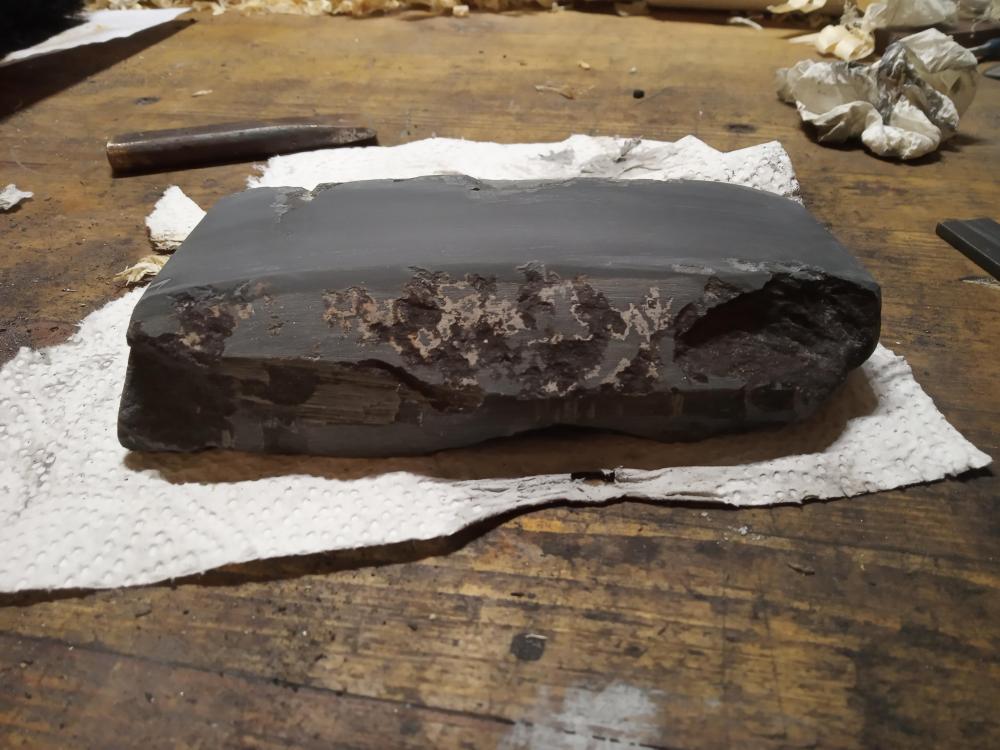
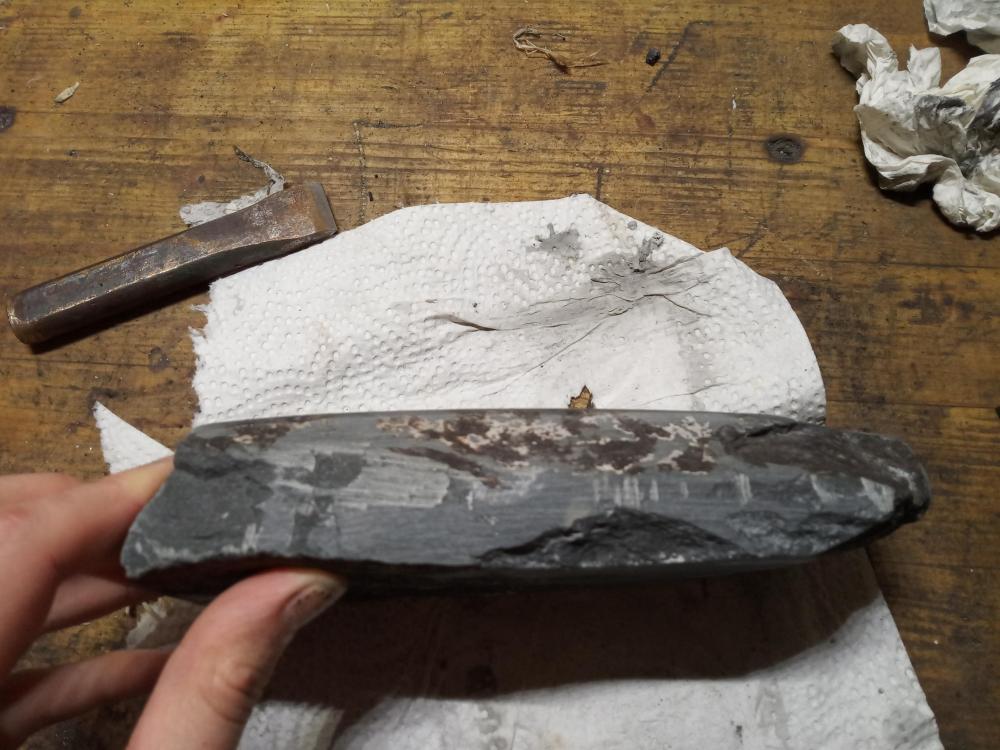
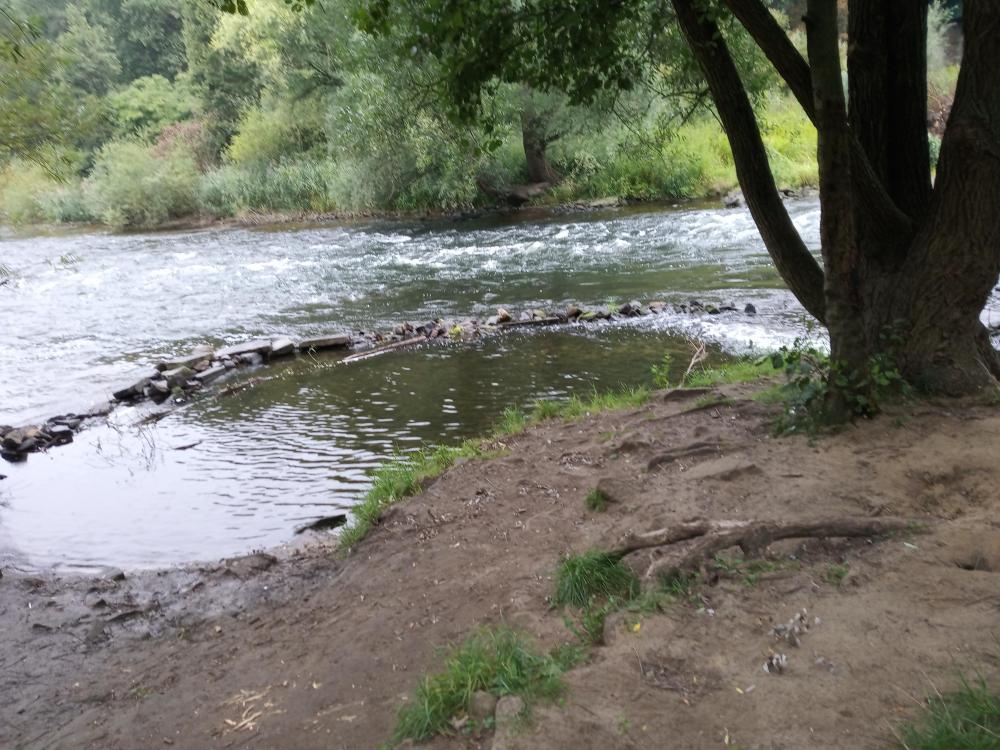
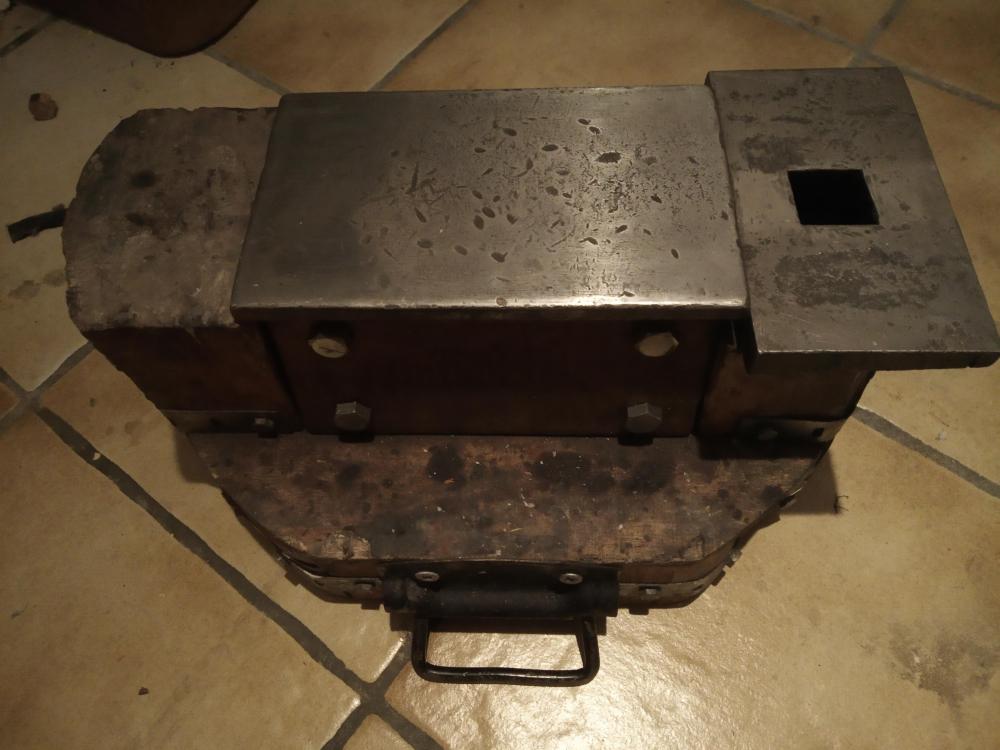
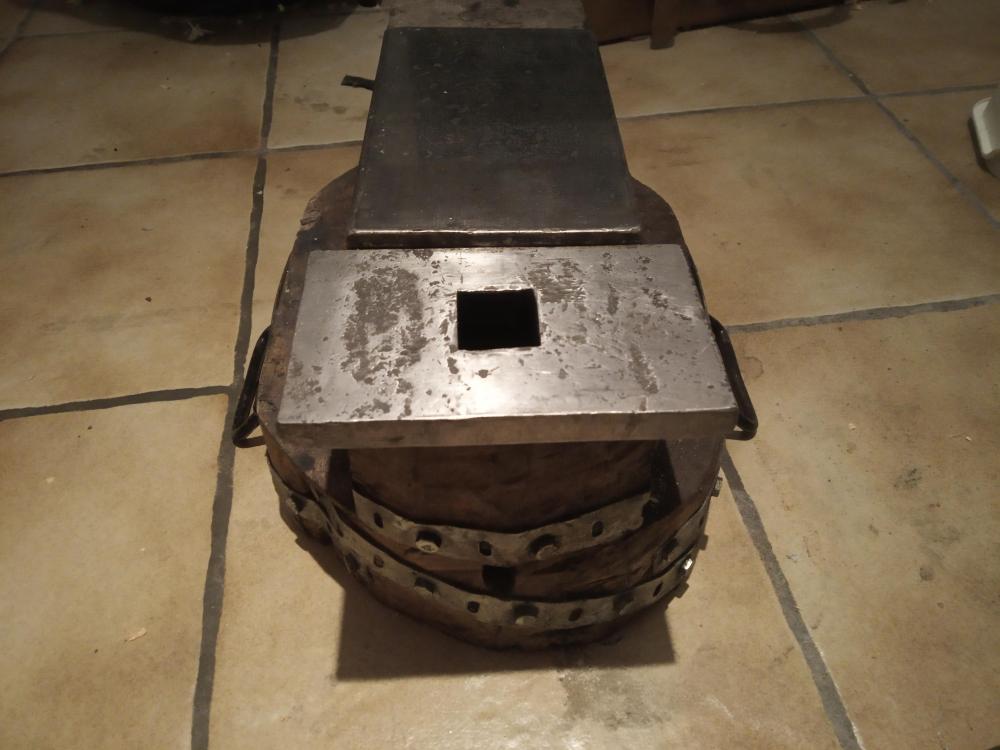
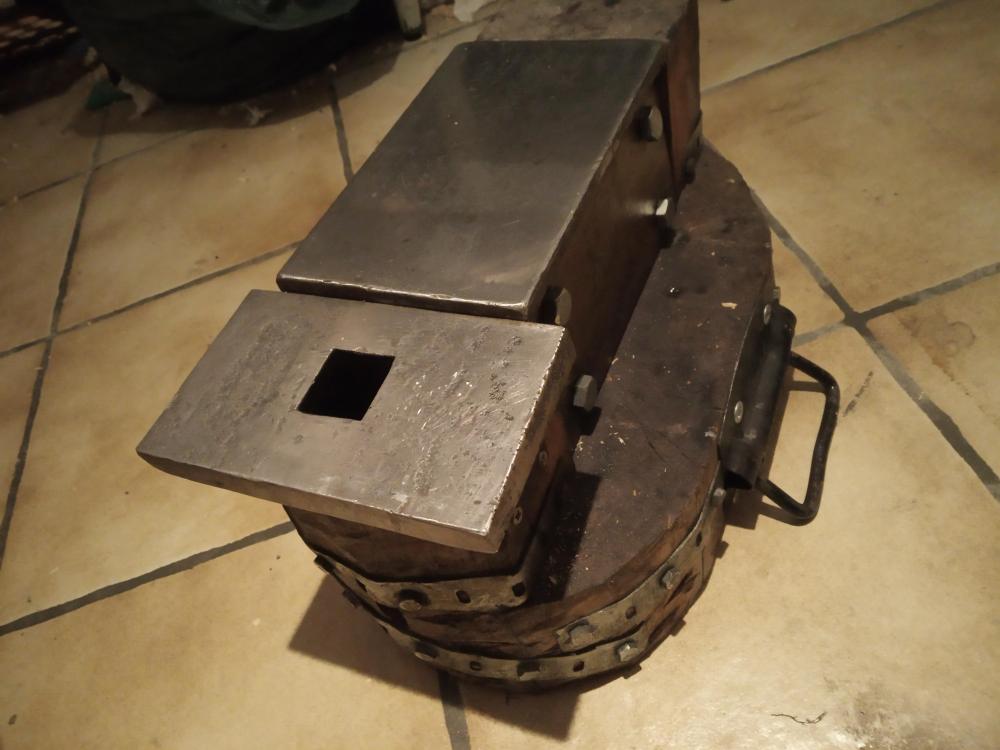
.png.41c63a3c6e517cdfcade9a13967073d0.png)
.png.2a5123be7892d61107f87a64a9a4913c.png)
.png.d7329f02d94263998ae7308ed0c1da5b.png)
.png.d45776a1a26ed8e137eca6e1da7763ef.png)